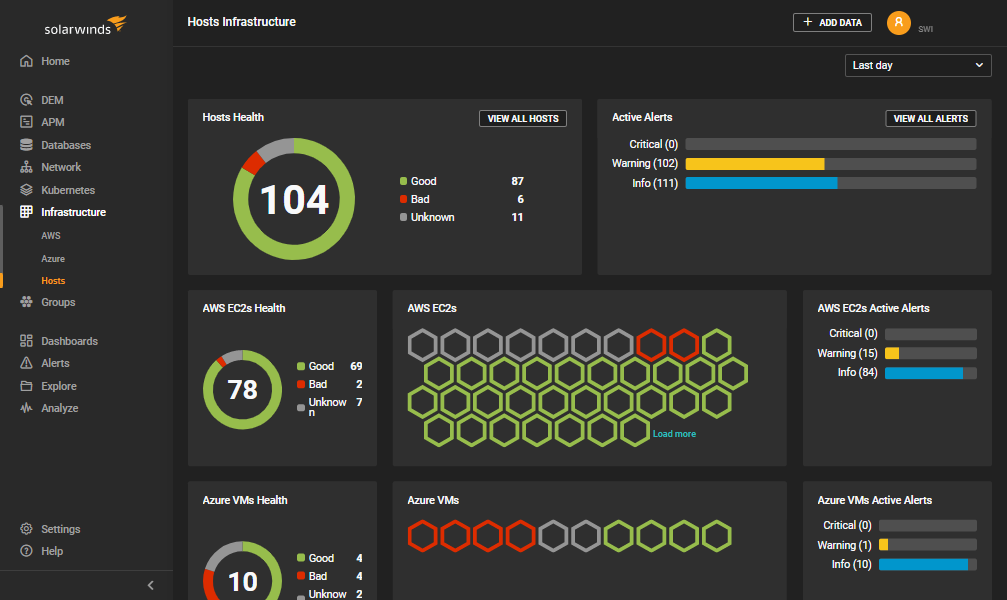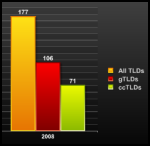No Earth Hour on the Internet – Yet

 Last Saturday evening, the Earth Hour organization encouraged people and businesses to turn unused appliances and computers off during one hour. As a global uptime monitoring service with access to 35,000 sites and servers all over the world, we decided to see if more web-connected devices than usual were offline (mostly servers managing websites).
Last Saturday evening, the Earth Hour organization encouraged people and businesses to turn unused appliances and computers off during one hour. As a global uptime monitoring service with access to 35,000 sites and servers all over the world, we decided to see if more web-connected devices than usual were offline (mostly servers managing websites).
We also issue a challenge to network administrators across the world.






 If you’ve seen the movie
If you’ve seen the movie  Just
Just 

 We got tired of not having a good cheat sheet at hand to convert uptime percentages to downtime and vice versa, so we made one. Hopefully you will find it useful (I know we will).
We got tired of not having a good cheat sheet at hand to convert uptime percentages to downtime and vice versa, so we made one. Hopefully you will find it useful (I know we will). Is the Internet rapidly becoming less of a safe, free and open place for our ideas, opinions and communication? One could convincingly argue that it is.
Is the Internet rapidly becoming less of a safe, free and open place for our ideas, opinions and communication? One could convincingly argue that it is.

 Submarine communication cables are the carriers of nearly 100 percent of all the mails, tweets, pasta recipes and other digital communications across the oceans. They connect every continent except Antarctica.
Submarine communication cables are the carriers of nearly 100 percent of all the mails, tweets, pasta recipes and other digital communications across the oceans. They connect every continent except Antarctica. Social networks are getting huge. So big, in fact, that many of them are competing in size with some of the largest countries in the world.
Social networks are getting huge. So big, in fact, that many of them are competing in size with some of the largest countries in the world. We just wanted to share the magnificent and very extremely important news that Pingdom now has more than 100 followers on Twitter (since yesterday).
We just wanted to share the magnificent and very extremely important news that Pingdom now has more than 100 followers on Twitter (since yesterday). 2009 looks set to be a break-through year for
2009 looks set to be a break-through year for  Last week the BitTorrent site Mininova was hit by a large-scale DDoS attack that caused a total of 14 hours of downtime. Regardless of what you think about torrent sites, this was an interesting example of how a website can be incapacitated by a DDoS attack.
Last week the BitTorrent site Mininova was hit by a large-scale DDoS attack that caused a total of 14 hours of downtime. Regardless of what you think about torrent sites, this was an interesting example of how a website can be incapacitated by a DDoS attack.
 Sooner or later, every site or application will fail. However the consequences depend not only on how the failure is managed but also on how it is communicated. Recently the web hosting company Media Temple and even Google have well illustrated how hard it is for modern connected organizations to respond quickly enough to system outages. Here’s a suggested crisis checklist and notes on the difficulties of always practicing it.
Sooner or later, every site or application will fail. However the consequences depend not only on how the failure is managed but also on how it is communicated. Recently the web hosting company Media Temple and even Google have well illustrated how hard it is for modern connected organizations to respond quickly enough to system outages. Here’s a suggested crisis checklist and notes on the difficulties of always practicing it. Since it launched in 1998, Google has become one of the true giants of the Internet. These days, Google has data centers all around the world and hundreds of thousands of servers. The sheer size of Google today makes it very interesting to look back at its humble beginnings as a small research project called Backrub at Stanford University.
Since it launched in 1998, Google has become one of the true giants of the Internet. These days, Google has data centers all around the world and hundreds of thousands of servers. The sheer size of Google today makes it very interesting to look back at its humble beginnings as a small research project called Backrub at Stanford University. If you missed that Google had a
If you missed that Google had a  There are now 177 million domain names across all top-level domains, which is an increase by 16% (24 million domain names) compared to a year ago.
There are now 177 million domain names across all top-level domains, which is an increase by 16% (24 million domain names) compared to a year ago. When it comes to the ability to do damage to a company, few employees have more power than sysadmins. Deep system access and inside knowledge is a necessary part of their job, but when things go bad between employee and employer, some very sensitive situations can arise.
When it comes to the ability to do damage to a company, few employees have more power than sysadmins. Deep system access and inside knowledge is a necessary part of their job, but when things go bad between employee and employer, some very sensitive situations can arise.



















